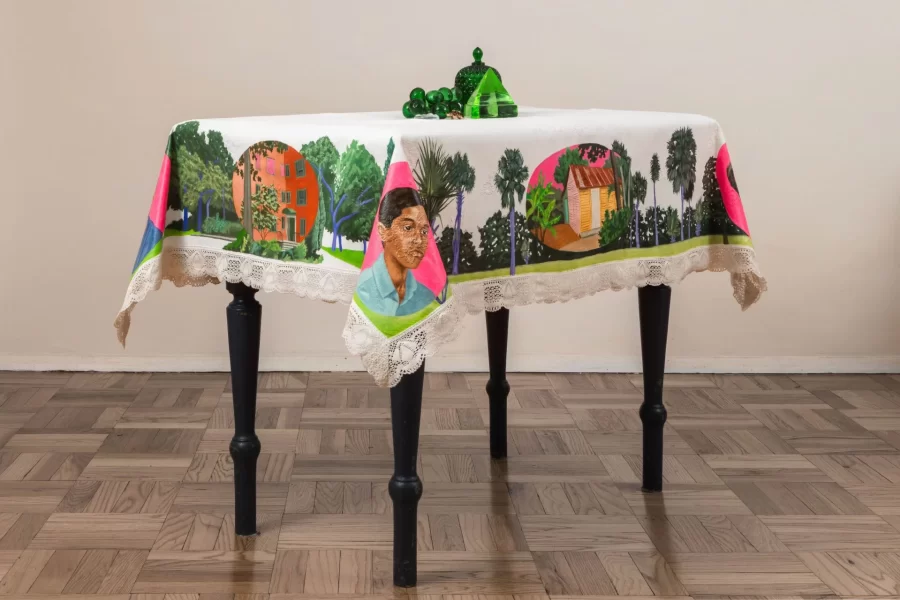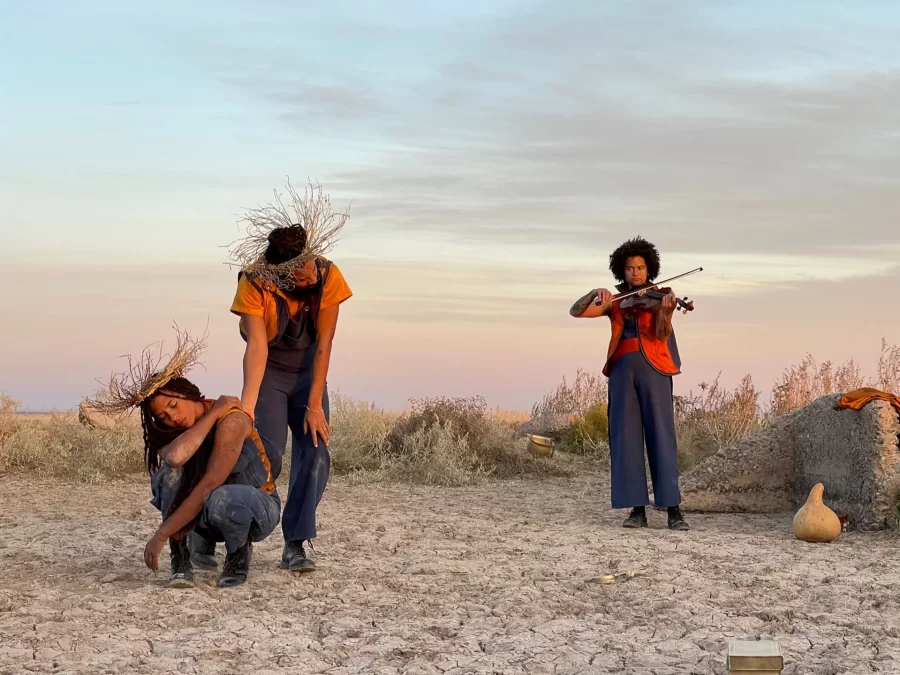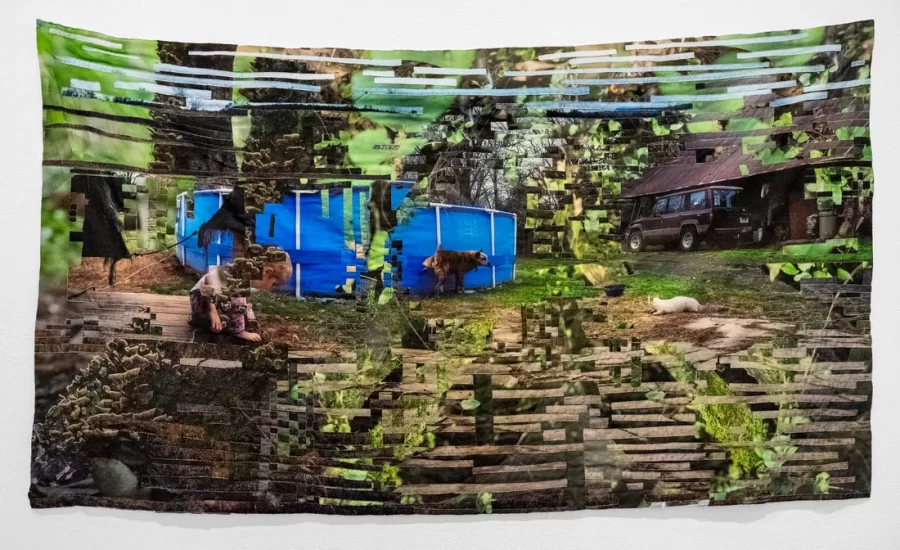
October 24, 2024 – March 15, 2025
Across Common Grounds proclaims that some of the most engaging and relevant artwork being made in or about America today relates to places that often exist outside of exclusive urban art centers. This art ties us to others and to the land around us.
Confronting assumptions placed on rural living regarding scarcity, authenticity, tradition, or simplicity, these artworks foster questions, critiques, stories, and celebrations about belonging within rural spaces that don’t fit easily within stereotyped boundaries and binaries. They also question assumptions on contemporary art as typically for the elite and wealthy living in large urban centers and able to travel internationally. This art instead deals with themes that are vital to aspects of our daily lives today. For instance, the relationship between migration and belonging shows that movement is not limited to cities and that rural locations are not as isolated as they have been portrayed. Artists also meld aspects of class and craftwork into their artworks to denote the history of materials and forms. Bodies in landscapes touch on gender identity and queer communities as connected with our earth in various ways. Subjects around the extraction of natural resources and colonization give way to exuberant reclamations of placekeeping strategies meant to hold up and preserve community knowledge.
Together, these compose an initial statement regarding the vibrancy of rural places where caring for both communities and land is unified, literally, across many common grounds. This exhibition seeks to update how we think about these aspects of the rural with contemporary making–asking what and where is the center, and what and where is outside? How do creatives fit their practices within these places and concepts today?
Across Common Grounds is Assistant Curator Samantha Sigmon’s first major organized exhibition at Bates College Museum of Art since moving to Maine from her home region of Northwest Arkansas in early 2023. “I came from generations of farmers, quilters, and builders. Working in the arts away from international cities and art fairs made me feel passionate about contemporary art that isn’t often seen as part of the wider art world, or is, but is not interpreted regarding the context of rural cultural landscapes. I want folks to see that artists can create communities and engaging artworks in and about anywhere. There are many more nuances and layers to rural America and art that addresses it than we might think. It proclaims that we all can contribute to our creative communities on various scales to tell our own stories.”
Presenting this theme in the rural state of Maine initiates another dialog with the area’s rich history of regional modernists of the early and mid-twentieth century. Interpretation also draws interdisciplinarily on rural studies fields through thinkers such as Wendell Berry, bell hooks, and Rebecca Solnit, and into recent scholarship for a multifaceted look on this theme. A special art magazine will be available featuring scholarship, poetry, and artwork related to this exhibition.
Across Common Grounds features work by:
- Sarah Ahmad (she/her; from Pakistan; currently lives in Tulsa, Oklahoma)
- Nikesha Breeze (she/they; from Portland, Oregon; currently lives in New Mexico), Miles Tokunow (he/they; currently lives in New Mexico), Lazarus Nance Letcher (they/them; from American Midwest; currently lives on ancestral and unceded Tiwa land known as Albuquerque, New Mexico), and MK (they/them; from Columbus, Mississippi and Sulligent, Alabama; currently lives in Albuquerque, New Mexico)
- Julian Chams (he/him, from Barranquilla, Caribbean region of Colombia; currently lives in Brooklyn, New York)
- Diana Cherbuliez (she/her; currently lives in Vinalhaven, Maine)
- Daniel Clauson (they/them; from the Pacific Northwest; currently lives in Sonoma, California)
- Harlan Crichton (he/him; from Mid-Coast, Maine; currently lives in Westbrook, Maine)
- Rachelle Dang (she/her; from Honolulu, Hawaii; currently lives in Brooklyn, New York)
- Gohar Dashti (she/her) and Hamed Noori (he/him; both from Iran; currently live in Cambridge, Massachusetts)
- Eyakem Gulilat (he/him; from Ethiopia; currently lives in Tulsa, Oklahoma)
- Dawn Holder (she/her; from Georgia; currently lives in Indianapolis, Indiana)
- Amber Imrie (they/she; from and currently lives in the Ozarks)
- Tristan Koepke (he/him; from Wisconsin; currently lives in Portland, Maine)
- Yowshien Kuo (he/him; Taiwanese American; currently lives in Saint Louis, Missouri)
- Jin Lee (she/her; Korean American; currently lives in Chicago, Illinois)
- Delvin Lugo (he/him; from Dominican Republic; currently lives in New York City, New York)
- Suchitra Mattai (she/her; Guyanese American of Indian heritage; currently lives in Denver, Colorado)
- Jacob Mitchell (he/him; from Shreveport, Louisiana; currently lives in New Orleans, Louisiana)
- Shey Rí Acu Rivera Ríos (they/them; from Borikén/Puerto Rico; currently lives in Providence, Rhode Island, land of Narragansett and Wompanoag peoples)
- Lokotah Sanborn, (he/him; Penobscot, from Indian Island, Maine; currently lives in Portland, Maine)
- Xaviera Simmons (she/her, currently lives in New York City, New York)
Organizing Curator: Samantha Sigmon, Assistant Curator
Curatorial and Exhibition Interns: Lola Buczkowski; Keira January; Clara Kennedy
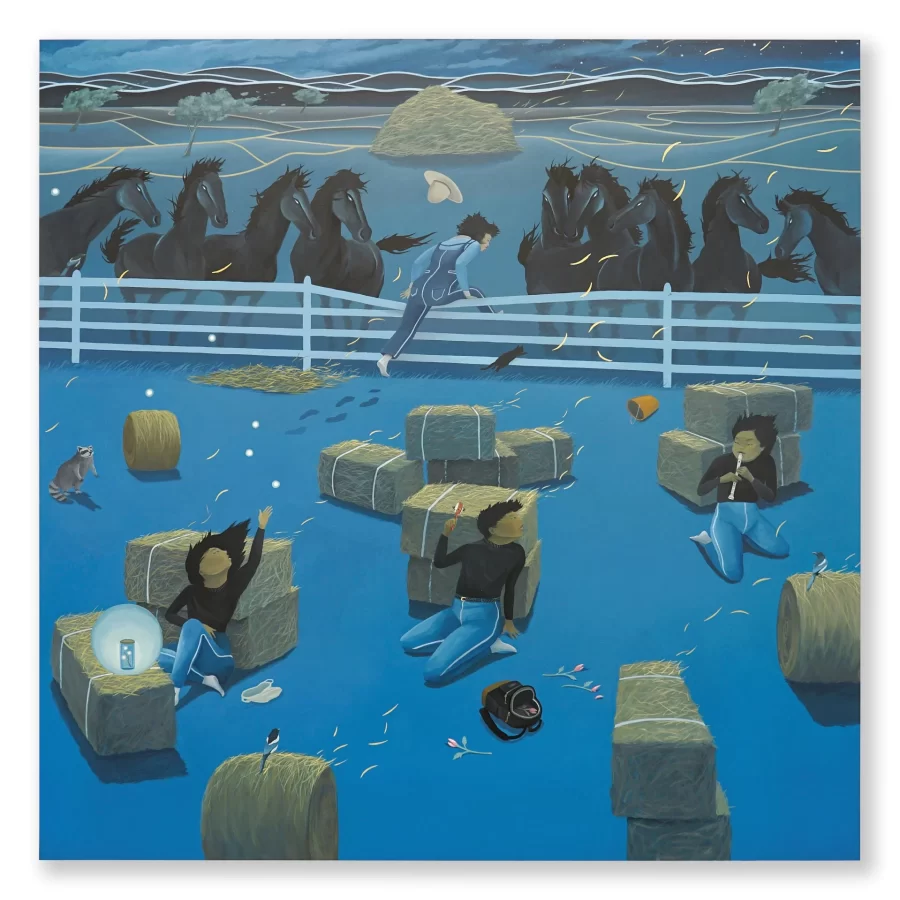
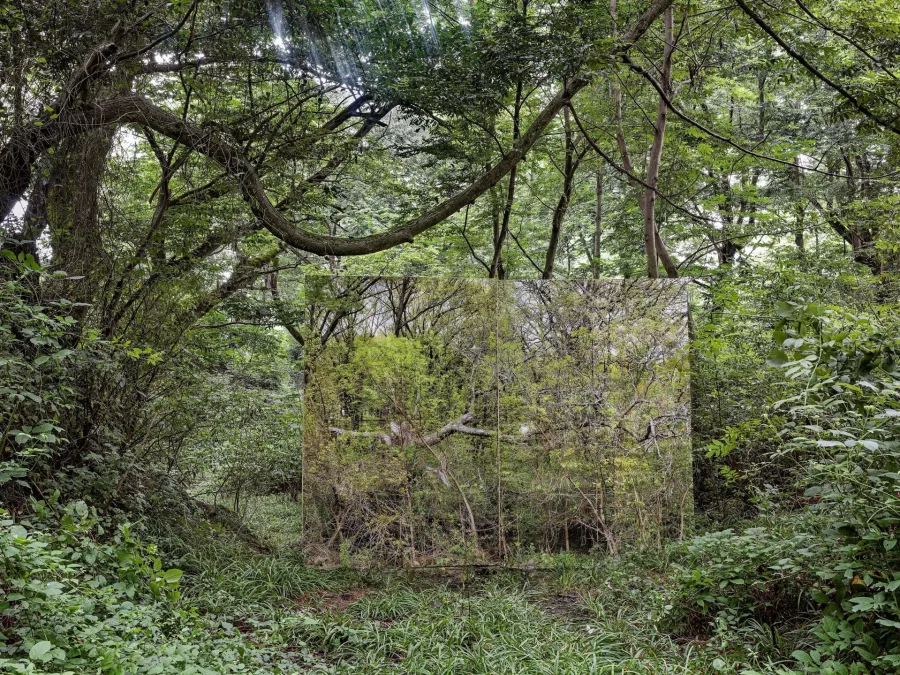
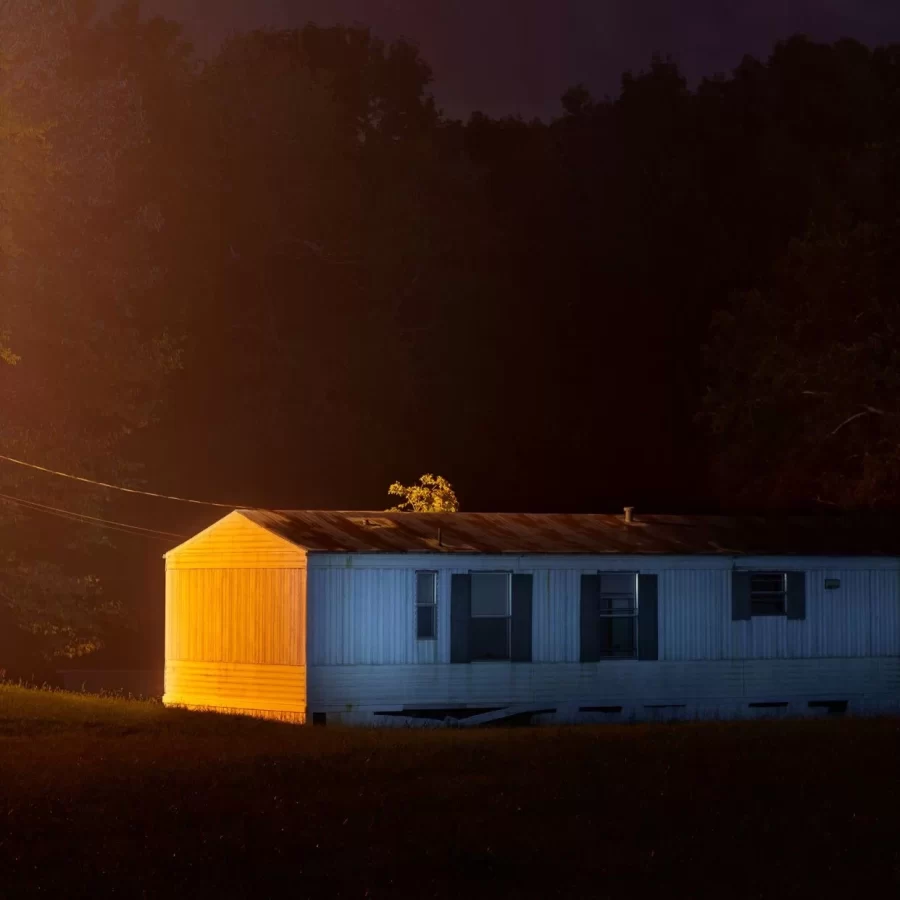
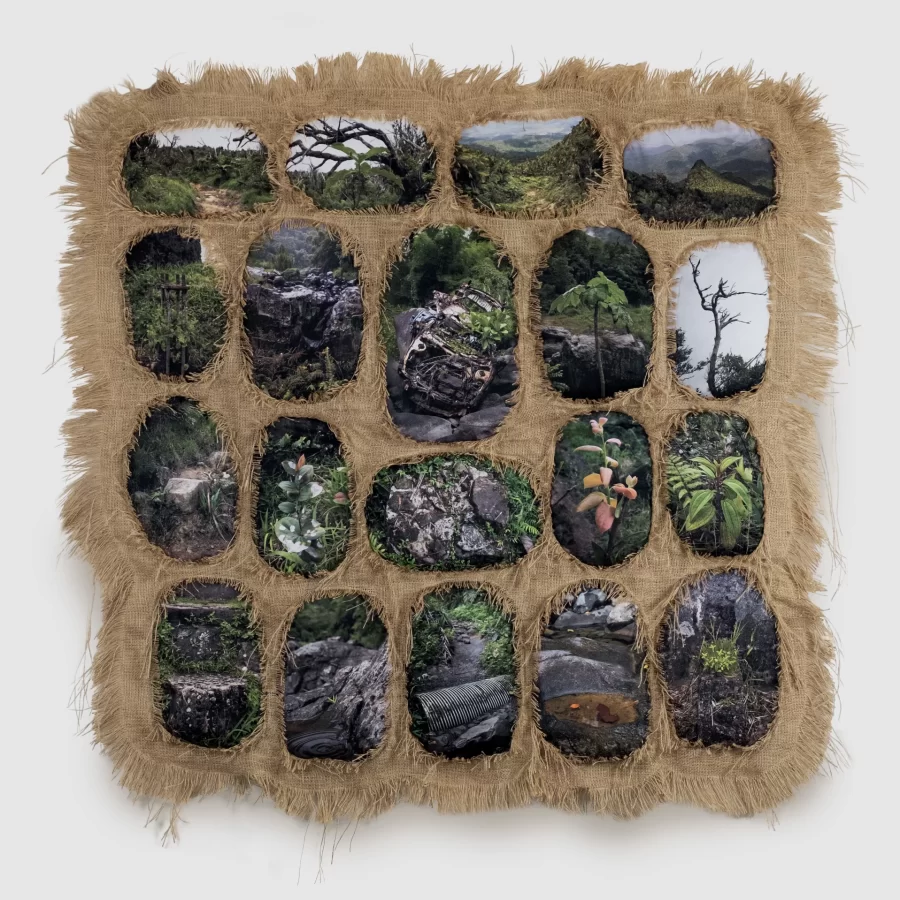
digital prints, batting, jute, courtesy of the artist
